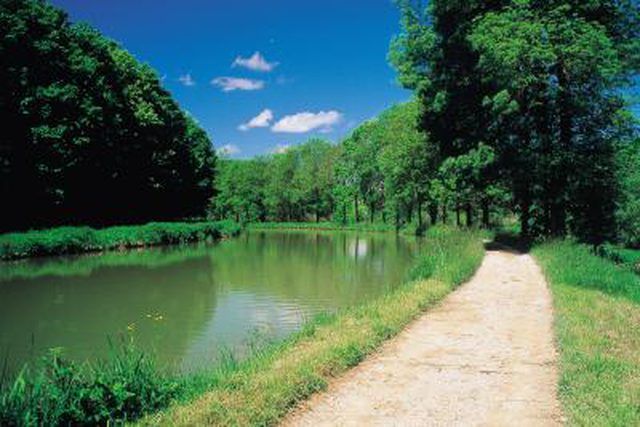Bulbs
Flower Basics
Flower Beds & Specialty Gardens
Flower Garden
Garden Furniture
Garden Gnomes
Garden Seeds
Garden Sheds
Garden Statues
Garden Tools & Supplies
Gardening Basics
Green & Organic
Groundcovers & Vines
Growing Annuals
Growing Basil
Growing Beans
Growing Berries
Growing Blueberries
Growing Cactus
Growing Corn
Growing Cotton
Growing Edibles
Growing Flowers
Growing Garlic
Growing Grapes
Growing Grass
Growing Herbs
Growing Jasmine
Growing Mint
Growing Mushrooms
Orchids
Growing Peanuts
Growing Perennials
Growing Plants
Growing Rosemary
Growing Roses
Growing Strawberries
Growing Sunflowers
Growing Thyme
Growing Tomatoes
Growing Tulips
Growing Vegetables
Herb Basics
Herb Garden
Indoor Growing
Landscaping Basics
Landscaping Patios
Landscaping Plants
Landscaping Shrubs
Landscaping Trees
Landscaping Walks & Pathways
Lawn Basics
Lawn Maintenance
Lawn Mowers
Lawn Ornaments
Lawn Planting
Lawn Tools
Outdoor Growing
Overall Landscape Planning
Pests, Weeds & Problems
Plant Basics
Rock Garden
Rose Garden
Shrubs
Soil
Specialty Gardens
Trees
Vegetable Garden
Yard Maintenance
How to Install Stairs on a River Bank
How to Install Stairs on a River Bank. Property owners whose land touches a stream or river must often plan for a sustainable means to access the water. A simple footpath without reinforcement can lead to serious erosion and make accessing the water for swimming, canoeing or other purposes difficult. To prevent or deal with bank erosion and ensure...

Property owners whose land touches a stream or river must often plan for a sustainable means to access the water. A simple footpath without reinforcement can lead to serious erosion and make accessing the water for swimming, canoeing or other purposes difficult. To prevent or deal with bank erosion and ensure long-term access, stairs can be constructed on the bank. Stairs made out of pressure-treated timber, when properly installed with rebar and protected from the current, are aesthetically pleasing and relatively inexpensive and easy to install and repair.
Things You'll Need
Measuring tape
Level
Framing square
Pencil or marker
Pressure treated timbers
Saw
Angle braces (4 inch by 4 inch, 2 inches wide)
Lag bolts (3/8 inch)
Drill
10-inch galvanized steel spikes (3/8 inch)
Sledgehammer
Mattocks, shovel and other digging and excavating tools
Rebar (4-foot lengths)
Gravel or other fill
Rip rap (large rocks)
Consult governing jurisdictions before beginning construction on a river bank. Typically, local, county or state governments regulate projects next to bodies of water and require permits.
Determine the number of steps that will be required. Hold a level board or string at the top of the sloped bank that extends over the bottom of the bank to where the lowest step will go and measure the distance between the ground and the level board to determine the total rise. Use this number as well as the total run that the steps must cover, or the horizontal distance between the bottom and the top of the area, in combination with the desired tread size, to calculate the number of steps that will be required.
Cut timbers to the required lengths. Take the length of the uncut timber into consideration. For example, if the uncut timbers are 8 feet, it may be ideal to make the step timber and the tieback sections all 4 feet.
Assemble the treads by attaching three lengths of timber, essentially creating a "U" for the front and sides of each step. Use angle braces and 3/8-inch lag bolts to join the sections together. Drill two 3/8-inch holes on each end of the front of the tread and use a sledgehammer to pound 3/8-inch steel spikes into the holes.
Excavate the area for the stairs. Wait to disturb the area by digging and removing earth until shortly before the steps can be installed to limit erosion. Create the rough shape of the staircase. It may be necessary to excavate the area further as the steps are installed.
Set the timber tread for the first step. Make sure that it is level. Add or remove fill as needed to correct any unevenness. The first step should be almost entirely buried in order to act as a solid base for the steps on top of it.
Attach the timber tiebacks to the ground with rebar. Drill a hole near the end of each tieback and pound a 4-foot length of rebar through the hole into the ground.
Build the rest of the steps until the top of the bank and the planned staircase top is reached. Place each U-shaped timber outline on top of the step below it, make sure it is level, drill holes on the the upper tread about four inches from each end and pound a spike through each hole to tie the steps together. Drill a hole through the back of each tie and pound rebar through it.
Fill the spaces for the treads with gravel or a gravel mixture. It may be most convenient to fill in the tread spaces as the stairs are constructed in order to create a level working space.
Place rip rap, or large rocks or boulders, at the base of the base of the stairs and otherwise stabilize the site. The large rocks will help to protect the lowest step from undercutting. As an alternative or in addition to large rocks, a vegetative buffer can be implemented upstream and around the base of the stairs. Vegetate any disrupted areas of the bank next to the stairs as quickly as possible to avoid erosion.